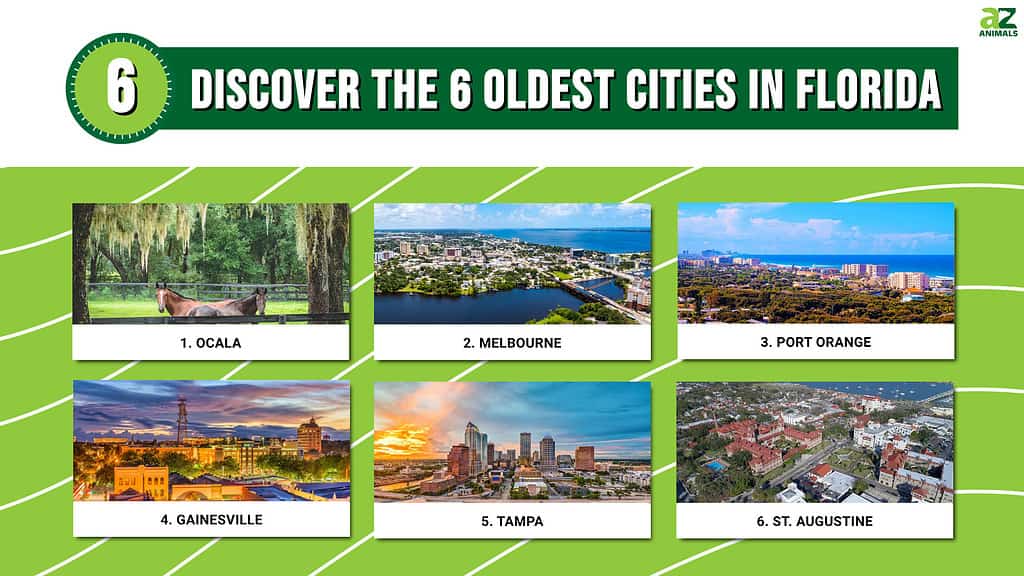
Florida became the 27th state to be accepted into the United States in 1845. However, some of Florida’s cities and settlements are older than its statehood. Florida has a population of over 21 million residents, as of 2020. The state features incredible natural scenery and landmarks such as the Everglades National Park. Wildlife in Florida is diverse, with an assortment of birds and fish and other animals unique to the region, like alligators. While many flock to Florida for its beaches, the state has much to offer in its numerous cities, especially the ones with plenty of history. Discover six of the oldest cities in the state of Florida!
Ocala
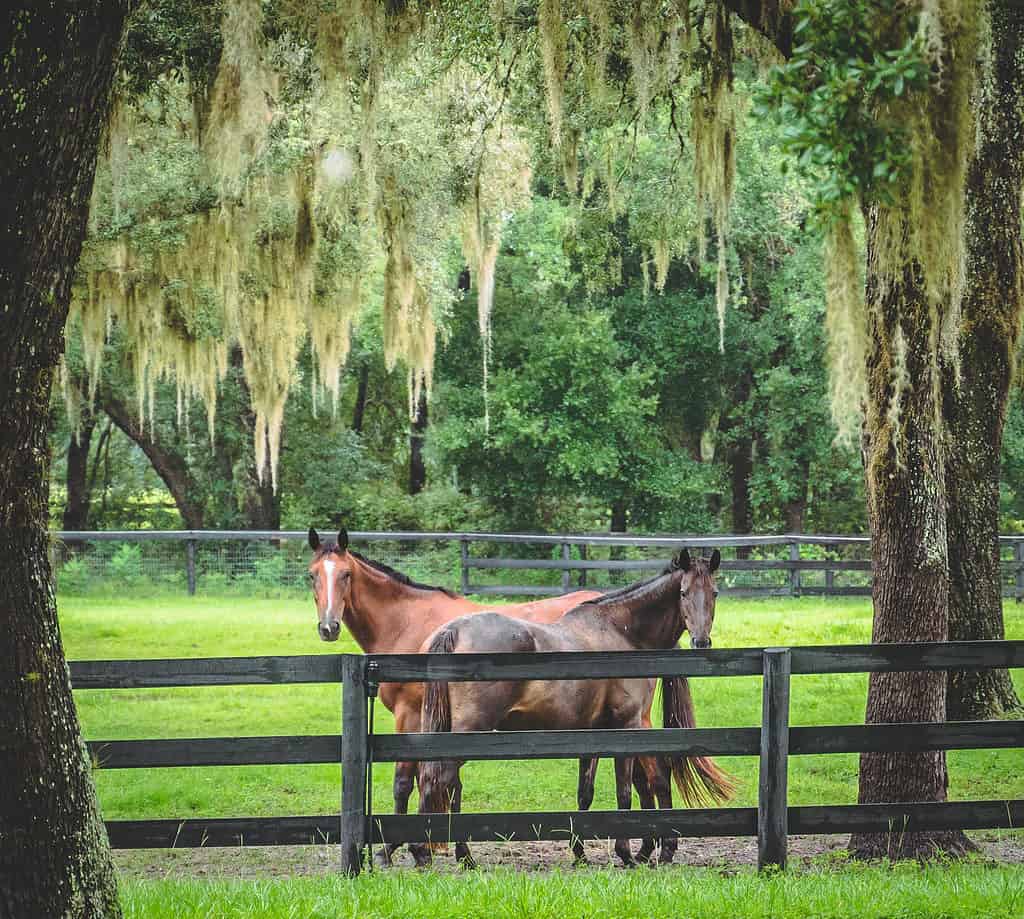
One of Ocala’s most popular agricultural endeavors is the breeding of thoroughbreds.
©Kurt Wehde/Shutterstock.com
Ocala, Florida was established in 1869. Fort King, which was founded in 1827, acted as a post during the Seminole Wars, and Ocala was established around Fort King. The name Ocala comes from the Timucua Native American term Ocali. While the definition of the term Ocali is unknown, it described an Indian province dating back to the 16th century. Ocala’s main industries included cotton, citrus, corn, and livestock production.
Present-day Ocala harvests fruits and vegetables, peanuts, and livestock. In addition, one popular agricultural endeavor is the breeding of Thoroughbreds. Other industries in Ocala include tourism and manufacturing. Manufacturing in Ocala focuses on the production of missiles, emergency and trade vehicles, and storage units.
Central Florida Community College is an important educational institution in Ocala. Some attractions in and near the city are the Silver Springs marine life viewing, where tourists can see marine life through the bottom of transparent boats, and several museums. Ocala National Forest is the most important feature in the area. This forest resides east of the city of Ocala.
Melbourne
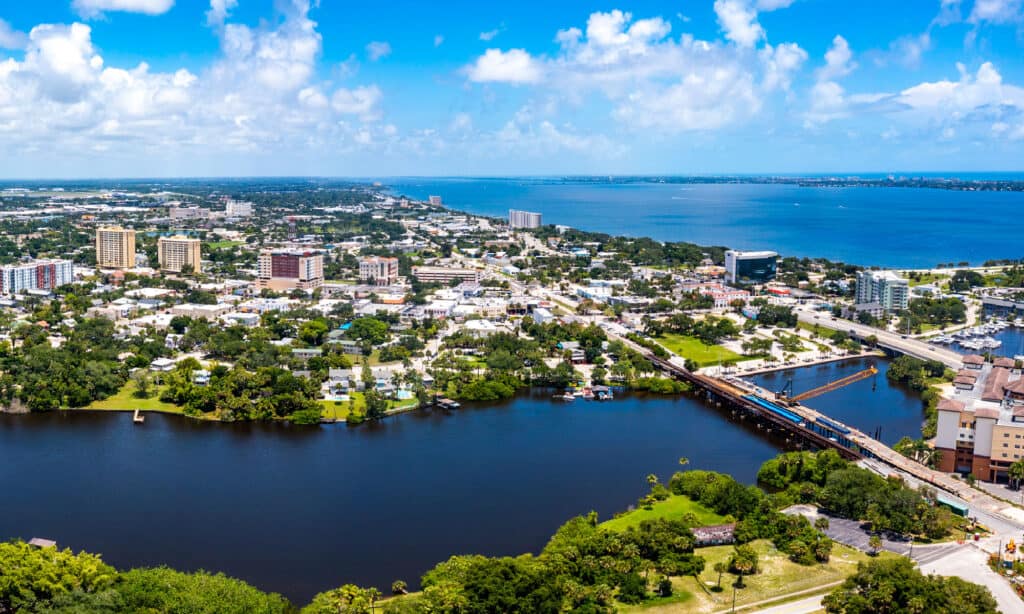
Important institutions in Melbourne include Florida Institute of Technology, along with the John F. Kennedy Space Center.
©iStock.com/Stephen Wood
Founded in 1867, Melbourne, Florida was officially settled in 1878. Melbourne sits on the Intracoastal Waterway approximately 60 miles southeast of Orlando, Florida. While the area was originally named Crane Creek, the city was renamed after Melbourne, Australia. Cornthwaite John Hector, the first postmaster of Melbourne, had lived in Melbourne, Australia prior to his arrival in the states.
At its start, Melbourne’s economy mainly focused on tourism, cattle raising, and the cultivation of citrus plants. However, Melbourne began to grow steadily due to the introduction of a NASA space program in a neighboring area. Thus, a shift occurred in Melbourne’s industries from tourism and agriculture to technology, military, and health care services.
Important institutions in Melbourne include Florida Institute of Technology, along with nearby aerospace complex, the John F. Kennedy Space Center. You can also find the Brevard Museum of Art and the Brevard Zoo. Interestingly, the city includes the Melbourne Bone Beds, which are a collection of fossil deposits. The bone beds contain fossils and other remains of extinct animals, such as mammoths, saber-toothed tigers, and ground sloths.
Port Orange
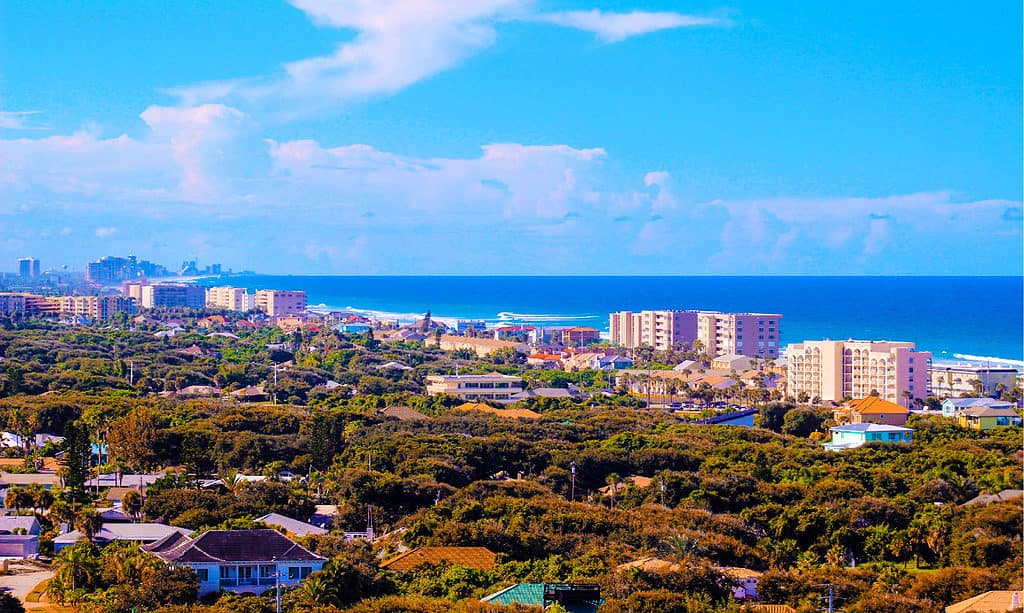
The original industries of Port Orange included cultivation of citrus-growing plants and farming. Now, Port Orange is mainly a residential area.
©Bianca Desmore/Shutterstock.com
Port Orange, Florida began as New Smyrna Colony in 1768, established by Dr. Andrew Turnbull, who was a Scottish physician and Consul to the British and Ottoman Empires. Land in Port Orange was later sold to Patrick Dean, who started Dunlawton Plantation. However, the city was officially acknowledged in 1867, following the Civil War. Dr. John Milton Hawks began the Florida Land and Lumber Company and brought officers from the Union army and 500 freedmen to settle the area.
Unfortunately, Port Orange experienced a difficult start. By 1869, only nine families were left in the city, and the original 500 freedmen had lost any social and economic standing due to poor planning and harvesting conditions.
The original industries of Port Orange included cultivation of citrus-growing plants, lumber, farming, and boat construction. Now, Port Orange is mainly a residential area with a population of around 60,000. Its commercial expansion is ever progressing.
Gainesville
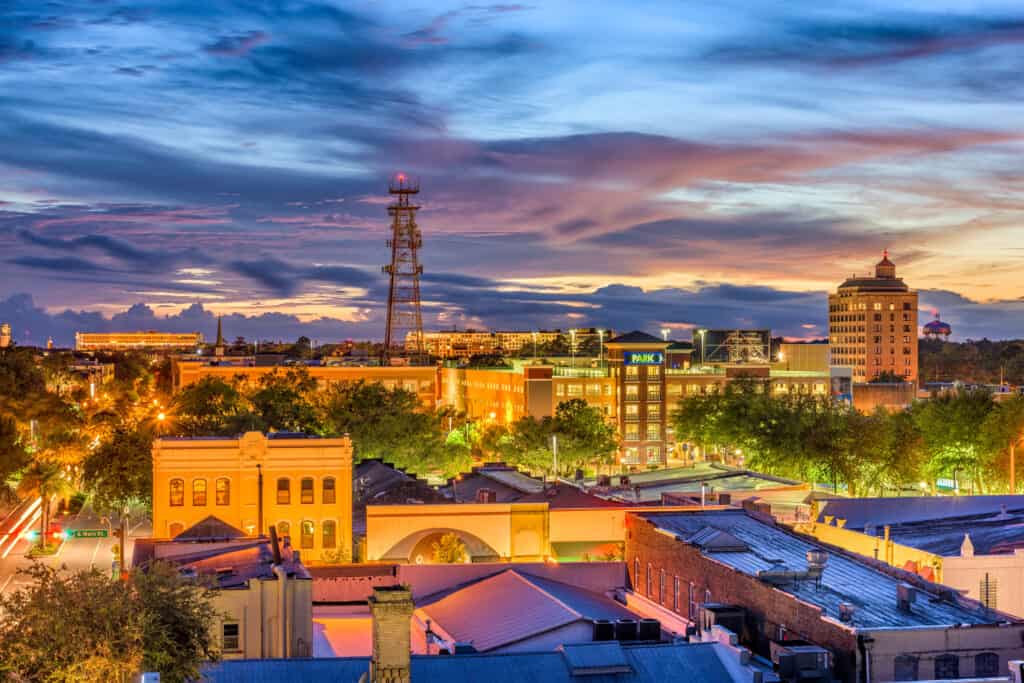
Gainesville’s main industries in modern times consist of tourism, health care services, and agriculture.
©iStock.com/Sean Pavone
The city of Gainesville was first discovered by Hernando de Soto, a famous Spanish explorer. The first temporary settlement in present-day Gainesville was called Hog Town, and it was established in 1830. The city grew to prominence in 1853, which was the year in which it received its name after General Edmund Pendleton Gaines. General Gaines acted as a commander during the War of 1812.
During the Civil War, a few small battles took place in Gainesville. The city’s industries began to spring up following the Civil War, including citrus, cotton, and phosphate mining. However, these industries disappeared after World War I. Gainesville’s main industries in modern times consist of tourism, health care services, and agriculture.
Main attractions in Gainesville include various mediums of the arts, including ballet, music, and theatre. Other sites include the Florida Museum of Natural History, numerous parks and preserves, and historic areas. Gainesville is home to Santa Fe Community College, which was introduced in 1966. The paramount feature of Gainesville is the University of Florida, founded in 1905. The university is key to growth within the city and to stability within Gainesville’s economy.
Tampa

The original name for the city was “Tampa Town,” which was eventually shortened to Tampa, as we know it today.
©iStock.com/Sean Pavone
The city of Tampa, Florida was established in 1849. While the area was first discovered by Spanish conquistador Ponce de Leon in 1513, the Spanish were preoccupied with settling other areas of Florida. Thus, it wasn’t until shortly after the U.S. Army established Fort Brooke at Tampa Bay that the city was recognized as a settlement. The original name for the city was “Tampa Town,” which was eventually shortened to Tampa, as we know it today.
Tampa’s steady growth following the Civil War is a result of the introduction of the South Florida Railroad in 1884. The railroad, hotels, and port facilities created in Tampa came from Henry B. Plant, who was a main contributor to population growth in the city. In the late 1800s, the main industry in Tampa was cigar manufacturing. However, the industry grew unpopular, and other industries began to take over.
The Port of Tampa was a crucial part of the city, as it encouraged trade and bolstered the economy. Primary exports out of Tampa included phosphates and citrus. Imports consisted of coal, steel, and petroleum. Now, manufacturing, technology, tourism, and financial and insurance services make up most of Tampa’s industries.
Attractions in Tampa include Busch Gardens Amusement Park, numerous museums, and the Tampa Bay Buccaneers NFL team. There are also a few community colleges and universities within the city. The city also hosts the exciting Gasparilla Pirate Fest. This festival takes place during the month of February. The Gasparilla Pirate Fest commemorates the character of Jose Gaspar, who was a vicious Spanish pirate that attacked the coast of western Florida over 200 years ago.
St. Augustine

The lovely Spanish architecture preserved in St. Augustine gives tourists a glimpse into the past of the oldest city in America.
©iStock.com/felixmizioznikov
St. Augustine, Florida was founded in 1565 by Pedro Menéndez, a Spanish conquistador. The city is the oldest continuously occupied European settlement in the United States. In fact, St. Augustine is more than 40 years older than Jamestown and was settled 55 years before the Mayflower voyage!
Menéndez named the settlement St. Augustine after the Catholic saint because it was on the day of St. Augustine’s feast that the conquistador first saw land from aboard his ship. While Menéndez was sent to Florida to remove the French from lands that the Spanish had claimed, he also created the great city of St. Augustine. The city itself acted as a military outpost and center for Catholic missionary settlements.
Today, St. Augustine, Florida showcases its incredible architecture and history. In fact, the city is a major tourism hub for visitors of Florida. Other aspects of St. Augustine’s economy include various services, aluminum manufacturing, and commercial fishing. Some important attractions in St. Augustine include a multitude of museums, the Fort Matanzas National Monument, and Flagler College.
What’s most fascinating about St. Augustine, though, is its beautiful Spanish architecture. While many of these buildings have begun to deteriorate, the city has put in noble efforts to restore such buildings and keep their integrity. The lovely Spanish architecture preserved in St. Augustine gives tourists a glimpse into the past of the oldest city in America.
The photo featured at the top of this post is © iStock.com/TraceRouda
FAQs (Frequently Asked Questions)
What is the oldest city in Florida?
The oldest city in Florida is St. Augustine, Florida, founded in 1565.
What are some important features of Florida?
Features of Florida include national parks, diverse wildlife, a host of industries, and many attractions.
When did Florida gain statehood?
Florida was granted statehood in 1845.
Thank you for reading! Have some feedback for us? Contact the AZ Animals editorial team.







